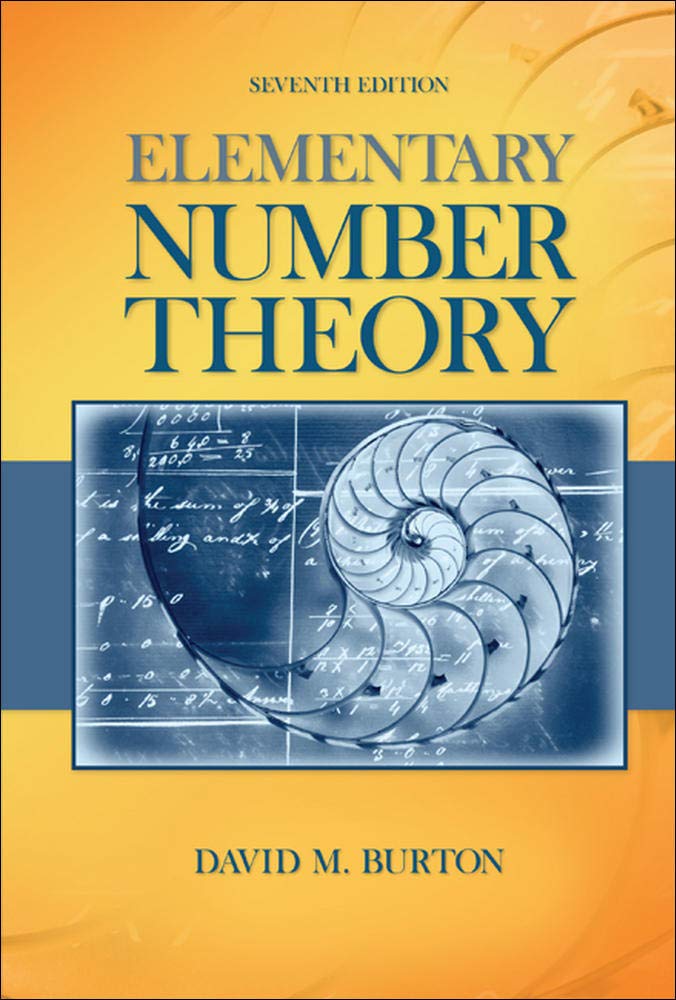
Elementary Number Theory Problems 4.3 Solution (David M. Burton's 7th Edition) - Q11
My Solution for "Assuming that $495$ divides $273x49y5$, obtain the digits $x$ and $y$."
Table of Contents
Background
All theorems, corollaries, and definitions listed in the book's order:

I will only use theorems or facts that are proved before this question. So, you will not see that I quote theorems or facts from the later chapters.
Question
Assuming that $495$ divides $273x49y5$, obtain the digits $x$ and $y$.
Solution
Let $n = 273x49y5$. We have $495 \mid 273x49y5$.
Divisibility by $9$
Since $495 = 9 \cdot 11 \cdot 5$, we have $9 \mid 495$. So, we have $9 \mid n$. Then the sum of the digits of $n$ must be divisible by $9$ according to Theorem 4.5:
$$ \begin{equation} \begin{split} 2+7+3+x+4+9+y+5 & = 30+x+y \\ \text{and} \quad 9 & \mid (30+x+y) \\ \end{split} \nonumber \end{equation} $$Divisibility by $11$
Similarly, since $11 \mid 495$, the alternating sum of the digits of $n$ must be divisible by $11$ according to Theorem 4.6:
$$ \begin{equation} \begin{split} 5 - y + 9 - 4 + x - 3 + 7 - 2 & = 12+x-y \\ \text{and} \quad 11 & \mid (12+x-y) \\ \end{split} \nonumber \end{equation} $$Constraints on $x$ and $y$
Since $x$ and $y$ are digits, $0 \leq x, y \leq 9$. So, we have
$$ \begin{equation} \begin{split} 0 \leq x + y \leq 18 \quad \text{and} \quad -9 \leq x-y \leq 9 \\ \end{split} \nonumber \end{equation} $$which means
$$ \begin{equation} \begin{split} 30 \leq 30 + x + y \leq 48 \quad \text{and} \quad 3 \leq 12 + x - y \leq 21 \end{split} \nonumber \end{equation} $$Solving the System
Because $9 \mid (30 + x + y)$ and $30 \leq 30 + x + y \leq 48$, we have:
$$ \begin{equation} \begin{split} 30 + x + y = 36 \quad \text{or} \quad 30 + x + y = 45 \end{split} \nonumber \end{equation} $$which implies that $x + y = 6$ or $x + y = 15$.
Because $11 \mid (12+x-y)$ and $3 \leq 12 + x - y \leq 21$, we have
$$ \begin{equation} \begin{split} 12+x-y & = 11 \\ \end{split} \nonumber \end{equation} $$which implies that $x - y = -1$.
$x - y = -1$ means that $x$ and $y$ are consecutive integers. Their sum must be an odd integer, which eliminates the situation for $x + y = 6$.
Conclusion
Combining $x + y = 15$ and $x - y = -1$, we get $x = 7$ and $y = 8$.
Ranblog Newsletter
Join the newsletter to receive the latest updates in your inbox.


